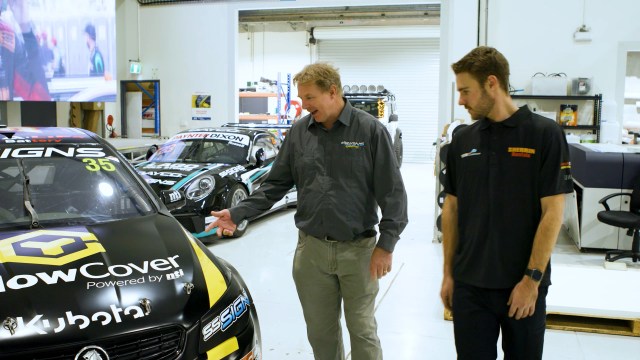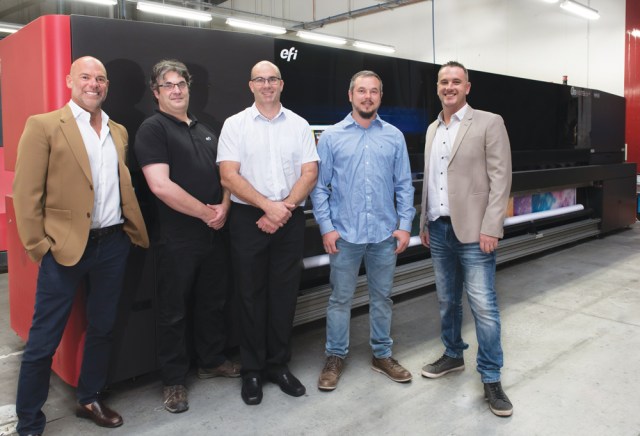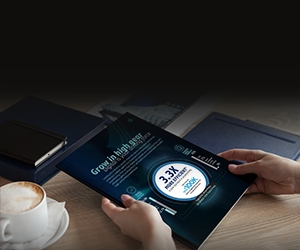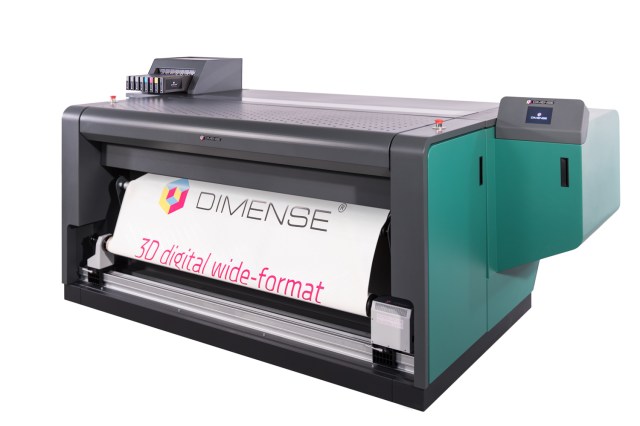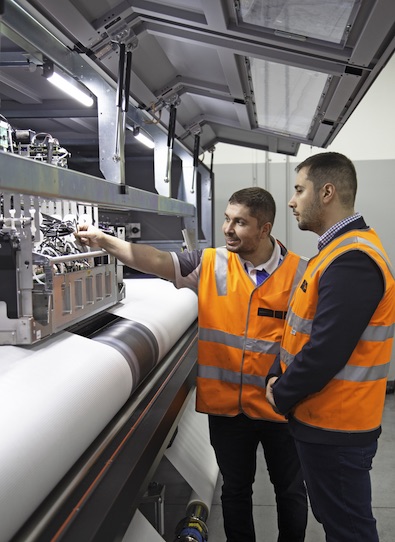
As a print company that has been in operation since November 2006, started with just $1000, and founded in a lounge room, Mediapoint has grown by leaps and bounds to become one of Australia’s largest trade-only flatbed and large format dedicated printers.
Founded by brothers Jamie and Jason Xuereb, the company only deals with resellers and is built on offering fast and reliable products such as boards, banners, posters, displays, and stickers.
In meeting its vision of offering fast and reliable products, the company has invested in its second Durst solution – the Durst 512R LED five-metre roll-to-roll printer.
Mediapoint sales director Jamie Xuereb said the print capacity of the Durst 512R LED printer is what attracted Mediapoint to the printer the most.
“We have been in business for 13 years and everyone knows us as experts at large format and flatbed printing. We know the magic happens in finishing. A lot of our processes have been great on that end but print capacity has been a bottleneck for us over the past few years,” Xuereb said.
“We’ve been saying no to a lot of the larger projects or partnerships that have come our way purely because print capacity was an issue. A few years ago, we invested in a flatbed printer and we bought over the factory that we were in. Those investments kept us tied up in what we were doing. Now, with the growth and support from our trade partners, we’ve been able to purchase another Durst machine, and possibly even more in the near future.”
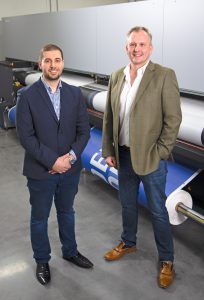
In Mediapoint’s DNA
Jamie and Jason grew up in a European immigrant household, with their parents starting a cleaning business when Jamie and Jason were young, and taking the boys out on jobs with them.
“It was not something we particularly enjoyed but as kids we did get to mix with small business owners and entrepreneurs. We were able to see and learn from their successes as well as their values while cleaning their office desks,” Xuereb said.
“We’ve learnt a lot of lessons from our parents, particularly from my father who is no longer with us. Because of this, it’s in our DNA to help businesses win.”
When Mediapoint launched in 2006, the brothers used the funds they had to buy a vinyl cutter off eBay and started off in signage through the contacts of their parents’ business. After a few months, the machine broke down, so they looked for another unit. In their searches, they found a machine that could print and also cut – a Roland SP-540V. That’s how the story of Mediapoint getting into print started.
In 2007, the company moved into its first headquarters, a 500 square metre facility, in Sunshine West, Victoria.
After continuing operation for several years, the brothers identified that the business’ strength was in production. As such, in 2011, they invested in a latex printer, followed by a flatbed printer.
“The majority of our customers were trade customers. They were mainly printers, print brokers, other signage companies, and anyone else that would on-sell print. They saw us as one of the most reliable in the market and liked our quality,” Xuereb said.
From that point on, the business became trade-only and no longer dealt with end-users of print.
In 2017, Mediapoint bought its current headquarters at Derrimut, Victoria – a 2200 square metered facility.
“It was one of the largest dedicated large format facilities in Melbourne. We then invested in some of the best flatbeds, large format, and finishing equipment in the market, like the Durst P10 250 HS Plus,” Xuereb added.
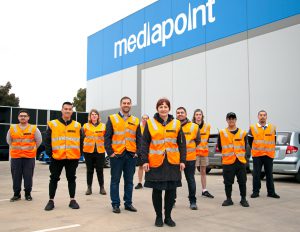
Solid with Durst
Mediapoint has been in strong liaisons with Durst since buying the P10.
“We were in talks with Durst and about 12 months ago, our numbers looked good and business was running to plan. In June 2019, I travelled to Belgium to see Durst customer sites and other printers to shortlist our options,” Xuereb said.
“In October 2019, I went to the Durst facility in Brixen, Northern Italy, and was able to see the 512R LED in action. Throughput was one of our key concerns before we invested in the second Durst printer, so that’s where the new unit has stepped in.”
Having predominantly run entry level to mid-tier equipment, Xuereb said Mediapoint needed an industrial printer that could last for several years.
“With Durst, we know that if you maintain your equipment and look after it, print quality won’t change even after a number of years if you maintain it properly,” Xuereb mentioned.
“We started off as a micro-customer of Durst but with time, it has led to a better relationship for us and it means that we’ve got a supplier that cares for our business.”
Durst Oceania managing director Matt Ashman said both companies were in conversation about flatbed and roll-to-roll from the start and Mediapoint’s purchase of the second printer from Durst cements the companies’ relationship.
“The conversations started about two years ago but at that time, flatbed was Mediapoint’s biggest need, so that’s what they invested in,” Ashman said.
Massive improvements
The first printer from Durst opened Mediapoint up to more business as it enabled the latter with more capacity.
“We were using that printer as a flatbed printer but also as a hybrid roll-to-roll printer and were running it for more than two shifts a day,” he said.
“So, we invested in the Durst 512R LED to take the roll media off the P10; now, we run the P10 for two shifts, just on boards. And that has opened us up to other markets as we have the capacity to print on the Durst 512R LED.”
With the Durst 512R LED on board, Mediapoint is now able to focus on corrugated plastic work with the P10, focusing on PVC, screen boards and other board stocks. With the 512R, it is focusing on banners, in addition to synthetic and normal paper projects.
According to Xuereb, since installation, the Durst 512R LED printer has provided the company with five times more capacity than what it had before.
In addition, he said he believes UV is the only high capacity ink formulation in the market, and that the Durst 512R printer having that capability means that throughputs have improved because of a lesser need for curing and drying.
“Just a few weeks back, we had a project where our customer needed about 1400 linear metres of material. We were able to load a triple roll with larger rolls and get it done overnight,” he said.
“If we compare this to before, it would have taken us days to complete it.”
Ashman said he recalls Xuereb getting excited about the latest innovations within the printer during the viewing.
“LED curing and the belt mesh kit, which is available and retrofit-able on all of our roll-to-roll printers, stood out to Jamie,” Ashman said.
“That enables a high-speed roll-to-roll printer to run mesh with a special ink extraction belt inserted inside the machine. Generally, mesh is a notoriously dirty product to print on as ink sprays through the holes on it, which results in the machine needing to be cleaned after.
“But it’s such a huge part of the Australian market so Durst Oceania worked with our global team to create the belt mesh kit. It inserts a conveyor belt under the print plane so the ink sprays through onto the negatively charged print plane while the belt moves to remove the ink buildup whilst the machine is printing and depositing the excess ink into a waste container, keeping the machine clean.
“The entire process is automated and shows the versatility of the printer.”
The Durst 512R LED printer is also able to print multi-roll, meaning alternatively to one 5.3 metre media being printed, two or three smaller medias can be printed side by side and double-sided.
“This is a feature that sets Durst apart from its competitors, in addition to the high quality and high speed that it provides. You get bundled into one printer, six different printers,” Ashman said.
In the high of a lockdown
When it came to installing the printer at Mediapoint, Durst faced a few hiccups. As the 512R LED was on its way to be installed, COVID-19 broke out and its effects meant that global lockdowns resulted in a few delays. Both Mediapoint and Durst had to come up with a smart strategy to make the install happen.
“We’re fortunate we have a big factory for such a small team. Social distancing – keeping two metres apart – wasn’t an issue for us. Getting the printer in wasn’t an issue as well,” Xuereb said.
“With COVID-19, we were expecting more of a delay than what happened, so everything happened better than we expected in the given scenario.”
Durst machines are shipped out by sea and Mediapoint’s machine hit the water just before COVID-19 struck and Italy got shut down.
“We were lucky that their printer had shipped before our factory in Italy was shut during COVID-19. There was just a small delay in the printer reaching Melbourne,” Ashman said.
“But, we had to plan for an install. So, we did a comprehensive risk assessment. We followed all the Federal and State Government guidelines, social distancing was observed, PPE was offered, and we managed to get the machine installed and up and running within a normal timeframe, which is within a week.”
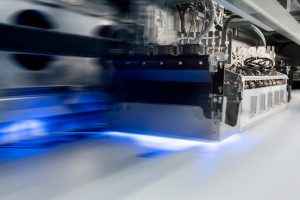
Adding on software
Mediapoint has also installed Durst’s Workflow system. Prior to this, the business used its own workflow system.
The Durst Workflow system includes all steps of the pre-press and production process in one single application. The browser-based software solution combines data preparation, colour management, and output preparation to ensure efficient production with optimal results in the shortest possible time.
Durst global sales director Wolfram Verwuester said Mediapoint decided to adopt its workflow system as it was looking to add value across its whole supply chain.
“Safety, security, businesses, and doing the best for their customers was the drivers behind the adoption of Workflow,” Verwuester said.
“Mediapoint knows that if their clients are not up and running, their businesses isn’t. And the value of software is that it automates and streamlines processes.
“The Durst Workflow system brings to Mediapoint a standardisation into colour, file preparation, file transfer and the whole digital workflow. It is key to bringing clarity to the whole system – from pre-press through to file optimisation.”
Verwuester said having Durst’s Workflow system saves Mediapoint time and valuable resources as automation is used to standardise processes.
“A business can use that time to be spent on more important business operatives. The solution also improves communication with a customer as the business system processes file transfers safely and quickly,” he added.
Data and analytics also plays a huge role in what Workflow offers as businesses can extract valuable information for their business needs.
“It provides you information about uptime, machine status, ink consumption, usage, status of sensors, and more. You get a lot of data out of the machine, which can be used to take business decisions,” he said.
“Analytics provides businesses with the ability to use data-predicted information for decisions. This is the new normal.”
Xuereb said having used Workflow, its production times have been phenomenal.
“The software is also constantly being constantly fine-tuned and improved, which is a plus,” Xuereb said.
“Mediapoint is a very automated business and this software system sits seamlessly within our business.”
Ashman added that Mediapoint’s upgrade of its workflow system shows its understanding of innovation.
“Mediapoint is a young company that has proven itself to be nimble in the adoption of new ideas and innovation. Being a ‘Durst-ler’ is a phrase that we extend to our customers and Mediapoint is now a part of our family,” he said.
Comment below to have your say on this story.
If you have a news story or tip-off, get in touch at editorial@sprinter.com.au.
Sign up to the Sprinter newsletter

